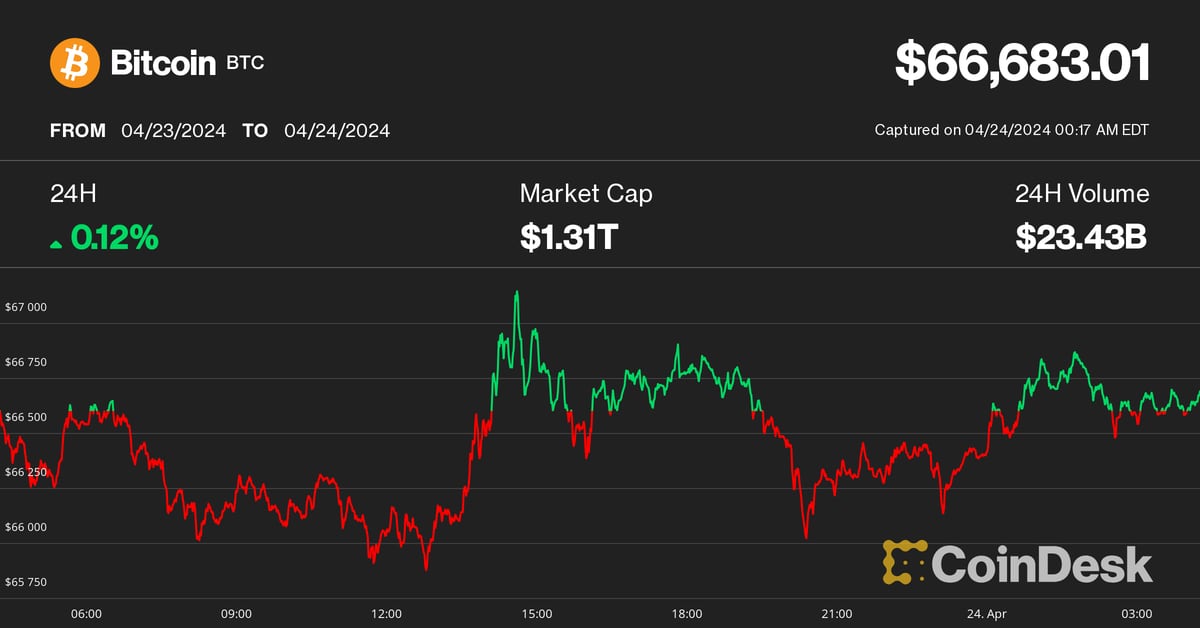
Bitcoin (BTC) and ether (ETH), the crypto market leaders, continue to trade in tight ranges as traders reassess macro conditions after halving.
“After the halving, market volatility was somewhat muted,” Thomas Kim, a trader at Presto, told CoinDesk. “Recent three-day realized volatility was well below the implied volatility of BTC options, and investors may still need to gauge macroeconomic variables.”
Liquidation data from CoinGlass shows that in the last 12 hours, $52.46 million in positions have been liquidated. Ether and BTC positions are the largest, respectively, but there’s also $6.86 million in HBAR liquidations – owing to the token’s recent surge in volume crossing the $1 billion mark – as well as $1.83 million in PEPE liquidations.
Justin d’Anethan from Keyrock, an Asia-based crypto market maker, said in a Telegram interview with CoinDesk that traders are indecisive and can’t make up their minds on what position to take.
“It’s an interesting – albeit not very dynamic – market to look at, both on the crypto and traditional side; traders seem unable to decidedly turn bullish or bearish, as evidenced by prices staying put,” he told CoinDesk.
“There’s a flurry of negative news weighing on markets,” d’Anethan continued, pointing to the SEC’s clear desire to delay the ETF application, President Joe Biden’s comments about crypto mining, and continuing crypto investment product outflows.
“On the flip side, and on a maybe more bullish side, the pullback we saw last week, which was intently caused by some leveraged long liquidations, has probably cleared some froth and left us sitting at a respectable level with some committed capital,” he said.
Coinglass data says that over the weekend of April 12-13, when Iran launched its missile attack on Israel, over $1.4 billion in long positions were liquidated.
“With the halving, crypto investors are not willing to part with their coins and are probably setting themselves up for higher prices long term.”
















































































Be the first to comment